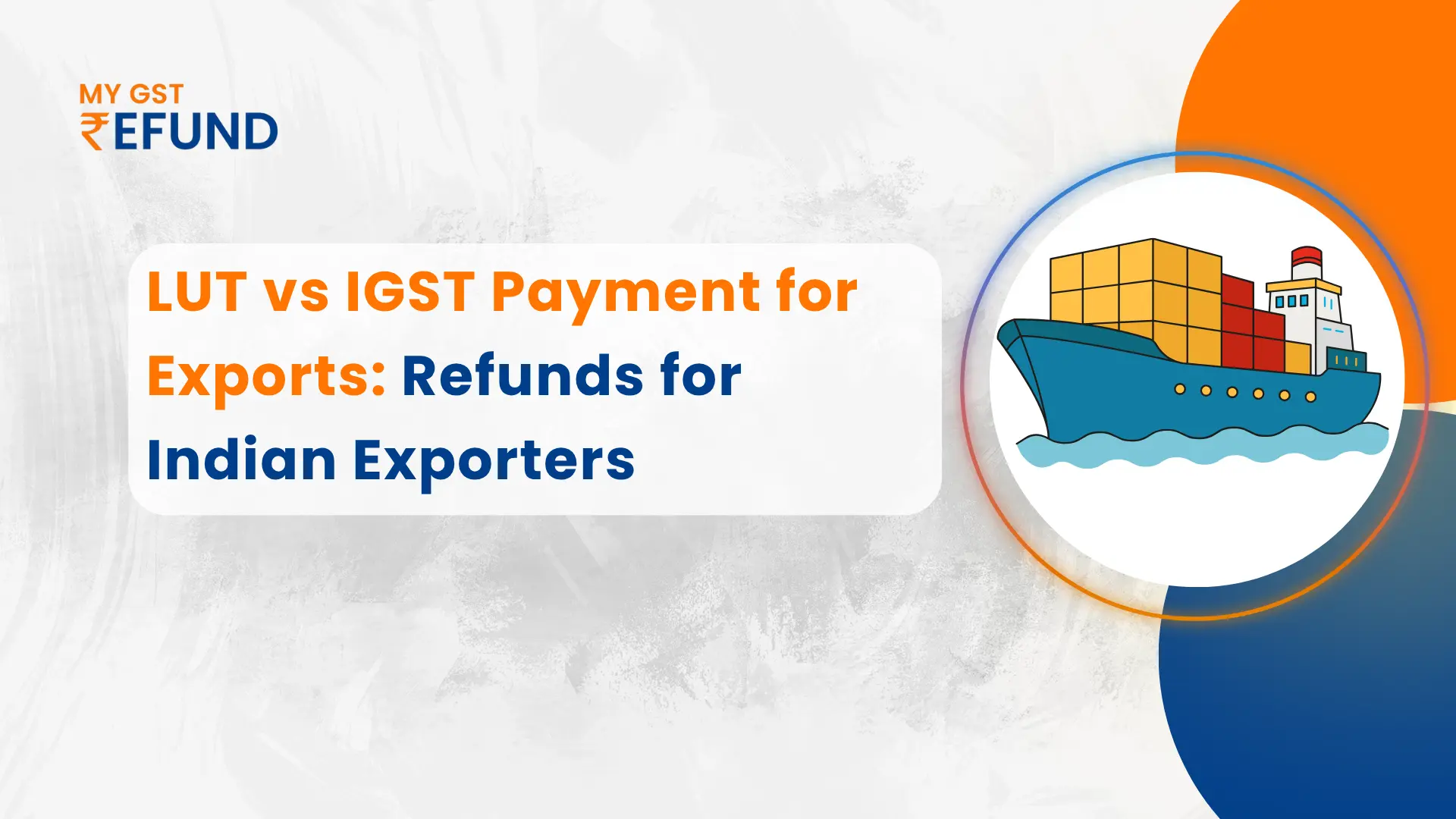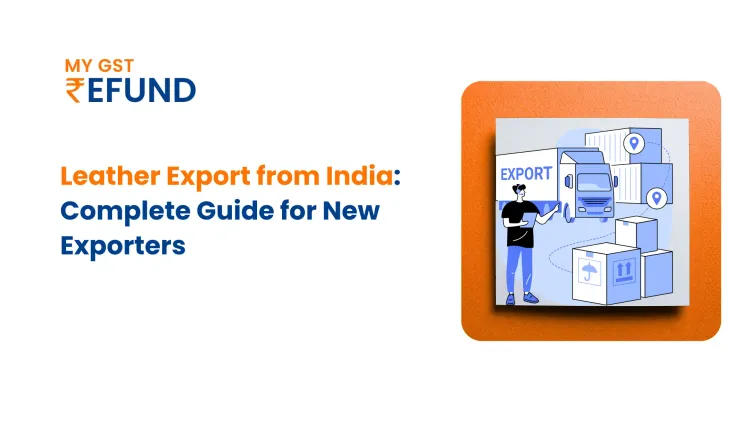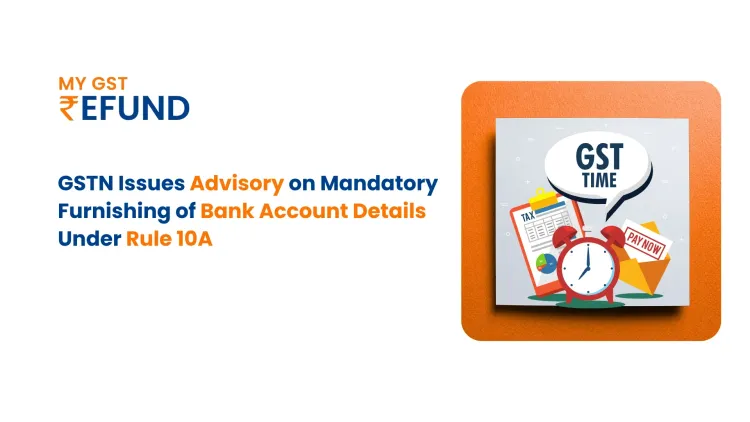LUT vs IGST Payment for Exports 2025
Published on: Thu Oct 16 2025
Bio (Reveal/Hide)

LUT vs IGST Payment for Exports (2025): A Complete Guide for Indian Exporters
When it comes to exporting from India under GST, you essentially have two options: provide IGST & file for a refund or export under an LUT, which means you aren't making an upfront payment of tax. Both options ensure your exports become zero-rated supplies and you take no tax burden abroad. The option that is right for you can vary your cash flow, speed of refund, and your overall compliance.
Why is it a "Zero-Rated Supply"?
The exports in India are a zero-rated supply under the Goods and Services Tax (GST) regime. This implies that the government does not apply GST on goods or services that are exported from the country. This is aimed at ensuring that Indian exports become internationally competitive through the exclusion of domestic tax costs in the exported goods or services.
There are two sources of GST refunds to exporters of goods or services:
- IGST is paid by the exporter on goods or services that he/she exports and rebates.
- The exporter has a Letter of Undertaking (LUT) under which he does not pay IGST at the first instance.
The two routes will lead to a GST export refund upon the completion of the process, but they will be different in mechanisms, cash flow, and documentation.
IGST Refund process of exports: How does it work?
Option 1: The IGST Payment & Refund Route Explained
In case you want to claim a refund on your exports, the refund procedure is done step-by-step as described below:
1. Send a tax bill in relation to your export business at the relevant rate of IGST.
2. Remit the IGST to the government - using your balance in your Input Tax Credit (ITC) or in cash.
3. Register your Shipping Bill on the ICEGATE portal, which is automatically used as your refund application.
4. Same period, File GSTR-1 and GSTR-3B, and ensure that the information is the same as your Shipping Bill.
5. After being checked, the refund is automatically paid to your bank account, which is registered.
The route is the most suitable for businesses that desire a faster refund of their ITC or accumulated ITC.
Pros and Cons of Paying IGST
Pros:
✅ Good: Use ITC: This is the most appropriate when the balance in your Input Tax Credit is large and not utilised.
✅ Easy Refund System: Automatic refunds when the Return data and shipping information are matched.
Cons:
⚠️ Working Capital Blockage: This is the money that is held until the refund is received.
Caution: Delays to Refund: Small differences between the shipping bill and GSTR-1 may hold up the refunds.
What does the GST Letter of Undertaking (LUT) mean?
Option 2: Export under Letter of Undertaking (LUT)
An exporter provides a declaration on Form GST RFD-11 in the form of a Letter of Undertaking (LUT) to permit the export of goods or services without paying the IGST. It essentially serves as a promise to the government that you will adhere to the export requirements and finish it by the deadline.
How to Export Under LUT and Claim ITC Refund?
So, the process of LUT export is as follows:
1. List your eligibility: This includes a history of evasion or being prosecuted on tax defaults.
2. After opening an account with GST, upload the LUT on the portal by the beginning of the financial year.
3. Export goods or services; no IGST is paid once approval has been granted.
4. Subsequently, claim a refund of unutilized ITC accruing on your inputs and input services consumed in the production of exports.
5. This will mean that your cash flow will not be deterred as there is no upfront IGST payable.
Pros and Cons of Using a LUT
Pros:
✅ No Working Capital Blockage: The largest benefit- your finances are open to make transactions.
✅ Reduced Paperwork and Invoicing: There is no necessity to charge or collect IGST in respect of the export invoices.
Cons:
Caution: ITC Refund Process Slowness: The accumulated ITC refund is not automatically processed and may be delayed.
Rebates: You are required to submit a new LUT for every financial year.
Comparison Table: LUT vs IGST Refund at a Glance
| Particulars | LUT (Letter of Undertaking) | IGST Payment & Refund |
|---|---|---|
| Tax Payment on Export | No IGST payable upfront | IGST paid and later refunded |
| Refund Type | Refund of unutilized ITC | Refund of paid IGST |
| Working Capital Impact | No blockage of funds | Cash flow is blocked until the refund |
| Processing Time | Manual and may take longer | Usually automatic and faster |
| Best For | Regular or high-volume exporters | Exporters with a large ITC balance |
| Renewal | Required annually | Not applicable |
| Ease of Process | Simple invoicing, separate refund filing | Single automated refund cycle |
How to Choose: Which Method is Best for Your Business?
The decision on LUT and IGST refund is determined by your priorities in cash flows, frequency of export, and the willingness to comply.
You are to select the IGST Payment Route in case-
- Export rate policy: You are a new exporter and have not yet met the requirements of a LUT.
- ITC Balance : You have a huge ITC balance that you would like to spend.
- Export: Export is low or limited, and the refund delay does not influence liquidity.
You Should File a LUT If
- The management of working capital is important to your business.
- You are either a regular or high-volume exporter.
- You have been exporting a service since LUT is most effective in such situations.
Creating a Risk-Resilient Export Compliance Strategy
You can make an informed decision that fits with your cash flow and refund strategy by being aware of these variations and the advantages that each option offers exporters.
The leading exporters actually have control over the supplier or exporter's compliance, the accuracy of the paperwork, and the return timetable, in addition to choosing the best path for the refund. This can be made extremely easy with the help of a professional GST portal such as MY GST Refund.
How MyGST Refund offers to exporters
- GST refund tracking of exporters, automation.
- Refund application status is seen in real time.
- Support in LUT filing, ITC reconciliation, and document verification.
- Professional assistance towards quicker, error-free refunds and complete adherence.
With an appropriate and reliable refund management software, you can be as profitable as possible, enjoy a decent cash flow, and remain in line with the changing GST standards.
How Exporters Maximize Profitability with the Right Export Strategy
The decision of whether to use LUT or IGST payment is not only a compliance issue but also one that is aimed at maximizing your cash flow and reducing the time spent on refunds. Although the IGST route is appropriate in cases where the business wants to utilize accumulated ITC, the LUT route is better as it keeps the business liquid and facilitates its smooth operations.
Through MY GST Refund, exporters will be able to manage their claims related to refunds easily, monitor their applications, and get professional help during the process. The decision you make today will have a direct effect on the profitability of your business tomorrow, and therefore, analyze what you are doing, how much you need cash, and take the best export strategy that fits your objectives.
Frequently asked questions (FAQs)
Q1.Who qualifies to make an LUT in GST?
Any exporter that has not been convicted of evading tax of above 250 lakh rupees is allowed to submit a LUT.
Q2.What will become of me in case I do not export after supplying a LUT?
In case of failure to export goods or services after submitting the LUT, then payment of the relevant IGST and interest may be required.
Q3.What is the IGST refund period for exports in 2025?
The refunds are normally certified within a period of 7-15 working days after the information is received in your GSTR-1, GSTR-3B, and Shipping Bill matches.
Q4. Does LUT Apply to SEZ Supplies as Well??
Yes, the supplies to Special Economic Zones (SEZ) are considered zero-rated, and you may make such supplies free of charge with the help of an LUT.
Related Posts






